First Australians made this land home tens of thousands of years ago. The Noosa River and the surrounding country belonged to countless generations of the Kabi Kabi nation. The estuary was full of fish and oysters, and the land was rich with casuarina, ash, gums, mahogany, honeysuckle, bloodwood, stringy bark, tea tree, scrub tree and box tree.
Colonial interest in the Noosa area began with timber in the early 1860s. When gold was discovered nearby in Gympie in 1867, development increased quickly in the area. Tewantin was established as a port for the local timber industry and to supply the booming town of Gympie. In the 1870s and 1880s a small number of miners and families from Gympie built houses on the bank downriver from Tewantin. This area became known as ‘Gympie Terrace’.
For nearly 60 years the only way to reach Gympie Terrace was by river as there was no bridge across the mouth of Lake Doonella to connect Gympie Terrace to Tewantin.
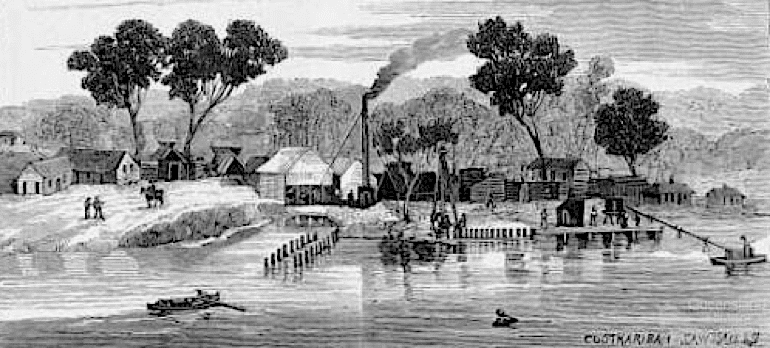
The lake scenery of Noosa, 1887, wood engraving by A.J. Boyd depicting Lake Cootharaba. Image courtesy of State Library of Victoria
The railway line from Brisbane to Gympie was completed in 1891 and rail became the preferred mode of transport for passengers and goods to Gympie. This reduced the use of Tewantin as a port and by the turn of the 20th Century the wharves were largely abandoned and in decay.
When Noosa Shire was formed in 1910, the population was estimated at 2000. Around 30 of these people lived at Gympie Terrace. Following the long, difficult years of the First World War (1914-1918), the 1920s brought many new residents to Gympie Terrace. It also saw a marked increase in holidaying and camping along the Noosa River, especially at Easter and Christmastime.
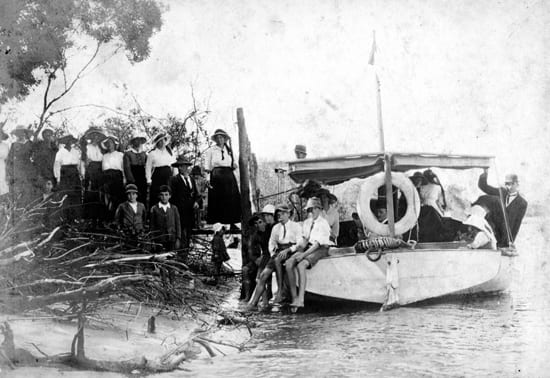
Day trippers on the Noosa River circa 1920s
In 1929, Gympie Terrace was connected to Tewantin by a bridge over Lake Doonella, and to Noosa Heads by a bridge over Weyba Creek. Access via land and an increasing number of automobiles brought many more residents and visitors to the idyllic spot. The river’s reputation for fantastic fishing was spreading also.
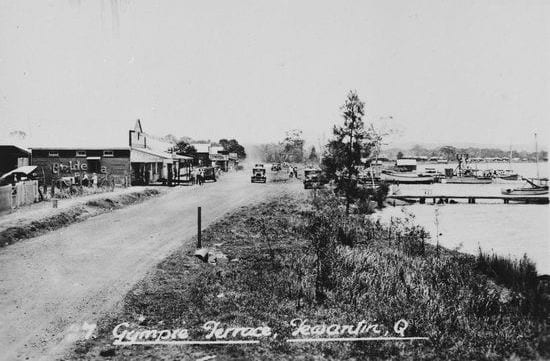
Gympie Terrace, circa early 1930s
By 1933, there were about 60 houses and shops at Gympie Terrace. Soon free buses would carry the residents of Gympie Terrace and Noosa Heads into Tewantin to attend the cinema on Saturday evenings,
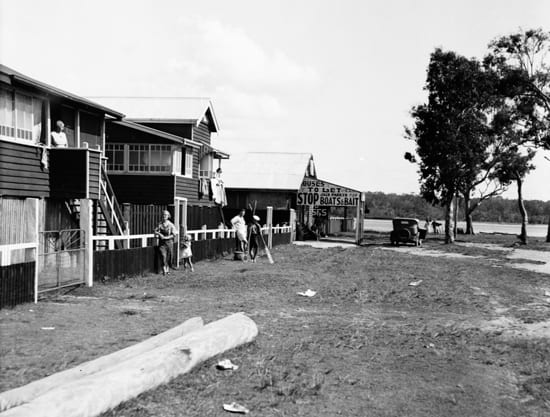
Parkyn family holiday cottages, Munna Point, 1930s
During the Second World War, some troops from the 2/14th Battalion spent time training in amphibious vehicles on the river and Lake Weyba. In the winter of 1942, Maisie Massoud fed hundreds of them each day from the wood fired ovens at her family’s café on Gympie Terrace. The Department of Army Artillery then used the area for artillery practice in the summer.
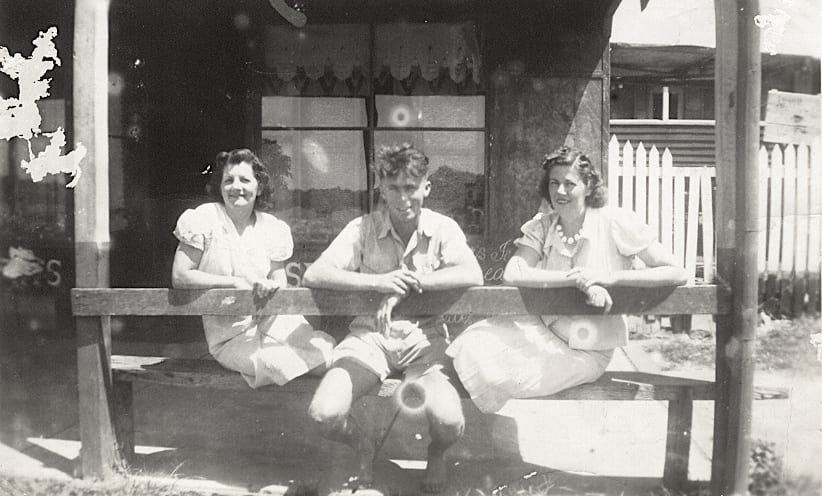
Maisie Massoud, Viv Ely and Kathie Massoud (nee Kross) in front of Maisie’s Cafe, circa early 1940s
After the war, fishing increased significantly. Professional fisherman and prawners multiplied. Boat hire businesses for amateur fisherfolk and holidaymakers were established on Gympie Terrace also. Electricity was connected to the suburb now known as Noosaville in 1947 and urban development began to increase in the area over the ensuing decades. By 1967, Noosaville had 430 dwellings.
The 1970s saw large amounts of land along Hilton Terrace sold for residential development and Hay’s Island reclaimed and turned into Noosa Sound. In 1974 a bridge was opened on Noosa Parade connecting Munna Point to Noosa Sound and thence to Noosa Heads.
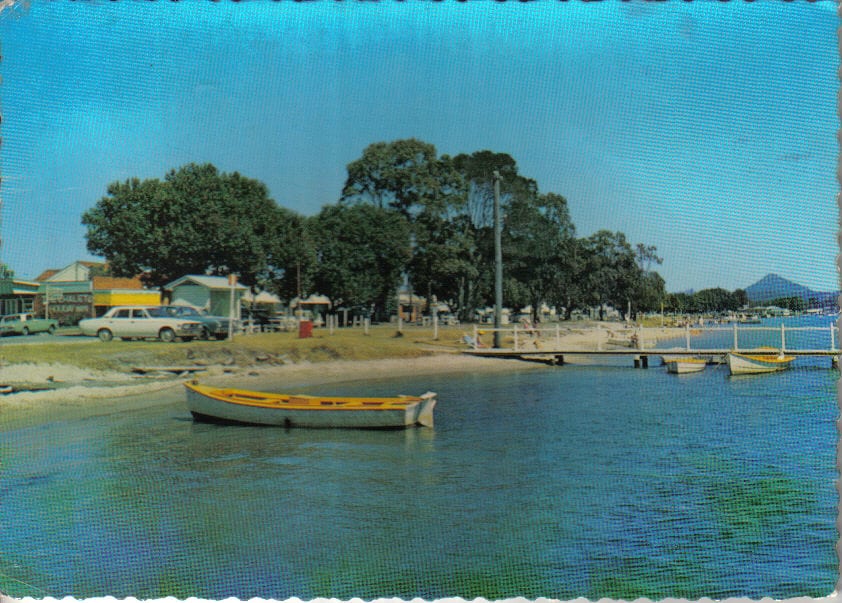
1970s postcard featuring Gympie Terrace
Expansions of the Sunshine Coast Airport in the 1980s and 1990s increased visitor numbers further.
Construction of the large subdivision called Noosa Waters began in 1990, the same year that the Council restricted building height to four storeys throughout the shire. The same year camping was banned at Noosa Woods, leaving Munna Point as the last camping space on the estuary.
In 1993, a 9-hectare community complex, which includes Wallace House, Noosaville Library and the Noosa Leisure Centre, was opened at Wallace Park. This land was the site of Noosaville’s first house.
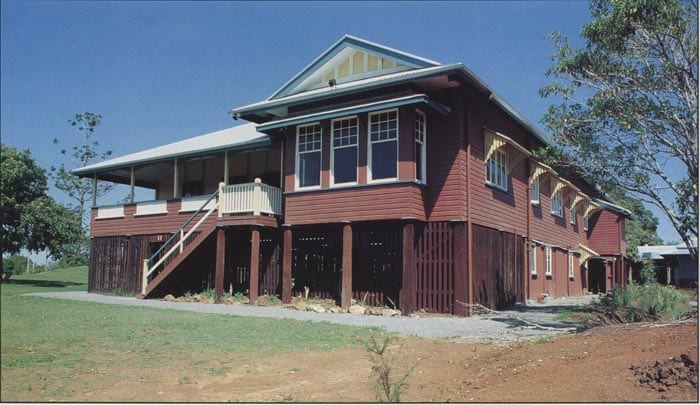
Wallace House circa 1990
At the beginning of the 21st Century, there were 6,808 residents in Noosaville out of Noosa Shire’s population was around 46,000.
Over the years, there have been proposals to change the name of Gympie Terrace. Residents with long ties to the street were strongly opposed. The original name remains as a reminder of the history and origins of this area.
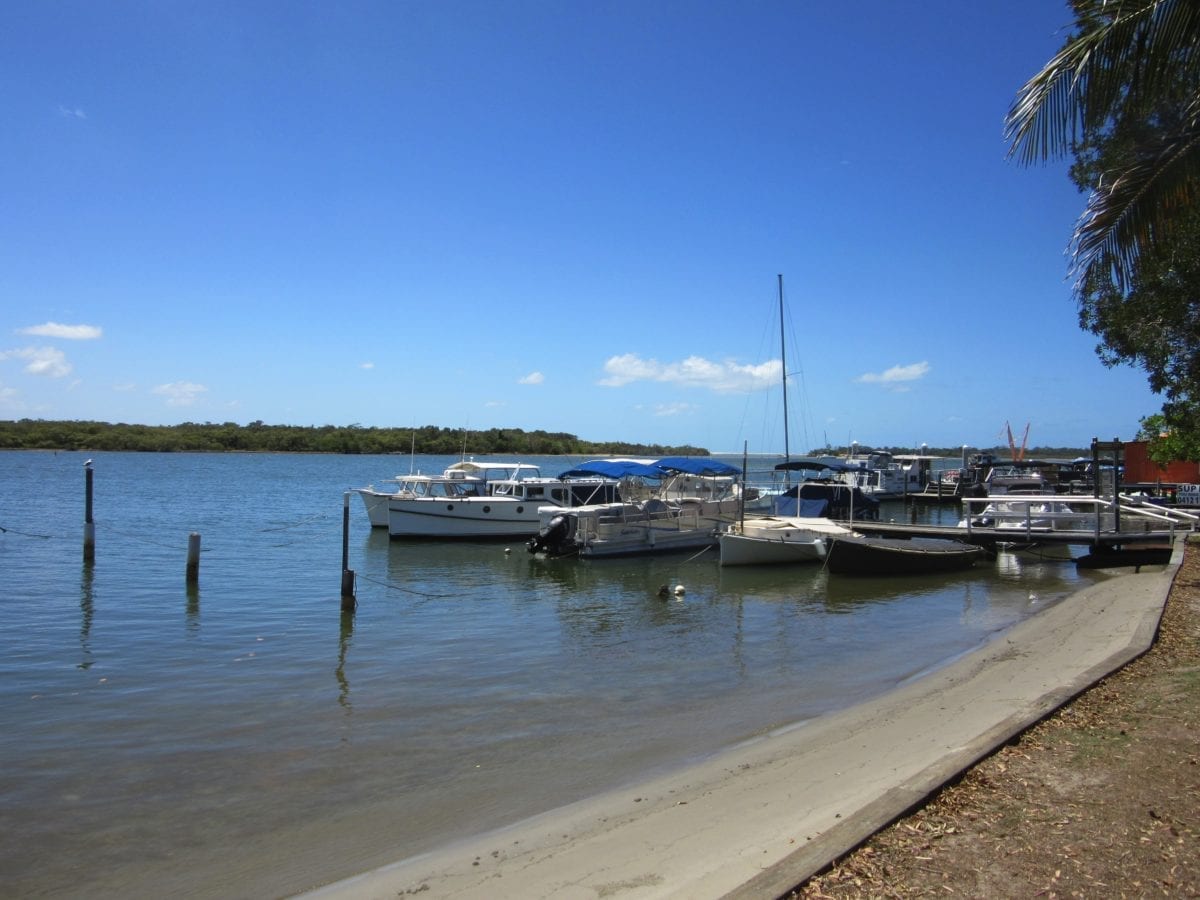
Gympie Terrace, 2019
